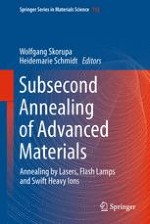The thermal processing of materials ranges from few fem to seconds by Swift Heavy Ion Implantation to about one second using advanced Rapid Thermal Annealing. This book offers after an historical excursus selected contributions on fundamental and applied aspects of thermal processing of classical elemental semiconductors and other advanced materials including nanostructures with novel optoelectronic, magnetic, and superconducting properties. Special emphasis is given on the diffusion and segregation of impurity atoms during thermal treatment. A broad range of examples describes the solid phase and/or liquid phase processing of elemental and compound semiconductors, dielectric composites and organic materials.
